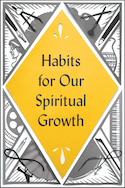What is the Background of the Book of Esther?

The book of Esther is among the most—if not in fact the most—disparaged book in the Bible with respect to its canonicity and inspiration. That is due in no small part to Esther being the only book of the Bible that has no explicit reference to God. In the writings of the early church fathers Esther is often simply ignored. Yet among later writers appears the statement by Martin Luther (AD 1483–1546) in his De servo arbitrio (ed. Jena, 3:182) that, “though they [i.e., the Jews] have this (book) in the canon, in my judgment it deserves more than all to be excluded from the canon.” And Franz Delitzsch stated that “in the book of Esther we perceive nothing of the impulses which the exile was to give to the people in the direction of the New Testament, nothing of prophetic afflation” (Old Testament History of Redemption [Edinburgh: Clark, 1881], 158-59).
The first piece of evidence that Esther was not yet considered canonical in the first century is derived from the Babylonian Talmud, a collection of ancient rabbinic legal discussions (codified around AD 500). The evidence consists of two statements in which a dissenting opinion is given either about Esther’s canonicity (in B. Tal. Megilla 7a, by Rav Samuel—who nonetheless affirms Esther’s inspiration) or its sanctity (in B. Tal. Sanhedrin 100a—though this may also simply be a question of canonicity, not inspiration—by Rav Levi bar Samuel and Rav Huna bar Hiyya). In both instances, however, these dissenting opinions by ancient rabbis are clearly presented as unacceptable—in the first instance because it contradicts the established view of the older rabbinic majority, and in the second instance because it is immediately dismissed as heretical by the principal rabbi (i.e., Rav Judah bar Ezekiel). Moreover, both of these dissenting opinions, which stem from the third century AD, run contrary to the older (i.e., no later than the second century) talmudic statement explicitly listing Esther among the accepted canonical books in B. Tal. Bava’ Batra’ 14b (and by implication in the first-century sources represented by Josephus in his Against Apion i.37-43, and the apocryphal work 2 Esdras 14:45-46).
The second main piece of evidence suggesting Esther’s unestablished canonicity at the time of Christ is its absence from the biblical fragments of the Dead Sea Scrolls, among which every other one of the 39 books of the Old Testament (enumerated as 24 books in Jewish tradition) is represented. However, in addition to the obvious weakness of such “evidence,” a careful study of the parabiblical Scrolls (i.e., apocryphal and apocrypha-like works based on the figures and events contained in the canonical books) reveals that Esther was in all likelihood viewed as canonical by the Dead Sea Scrolls community. Among such parabiblical scrolls is a work that is apparently based on the book of Esther and intended to be read as a (fictional) “prequel” to it. Since such apocrypha-type works are based, as a rule, on recognized canonical books, the implication of such a “prequel” is that Esther was indeed viewed as canonical. These factors indicate that the book of Esther is inspired by God and deserves to be included in the Hebrew canon.
The Moody Bible Commentary
by Michael A. Rydelnik and Michael Vanlaningham
Imagine having a team of 30 Moody Bible Institute professors helping you study the Bible. Now you can with this in-depth, user-friendly,...


Free ebook: Habits for Spiritual Growth
Sign up for our weekly email and get a free download
Bible Insights by Email
Sign up for learning delivered to your inbox weekly

Free ebook: Habits for Spiritual Growth
Sign up for our weekly email and get a free download